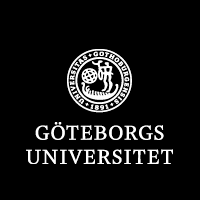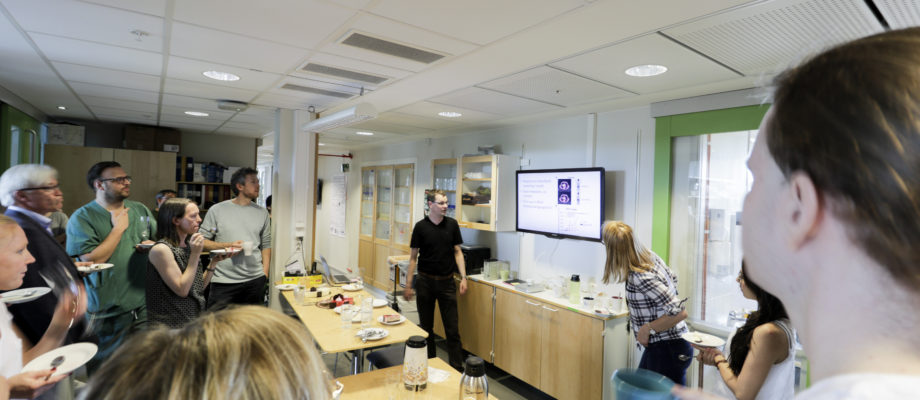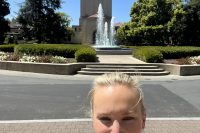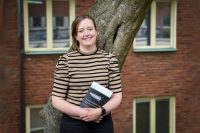NEW STUDY. Through multidisciplinary collaboration, cancer researchers at Sahlgrenska Academy and doctors at Sahlgrenska University Hospital have solved a case that was difficult to diagnose. The analytical methods employed probably can be used almost immediately for patients lacking a correct cancer diagnosis.
A patient sought care at Sahlgrenska University Hospital for lung cancer. Despite various treatments in several hospitals, the tumor kept coming back. Before dying of cancer, the patient contributed several biopsies to research, which now probably will increase the chances of receiving a diagnosis for those with cancers that are difficult to diagnose. The research has led to a new diagnostic tool, which is expected to help patients with intractable cancer get the right diagnosis and thereby better treatment.
Surprising results

Through good multidisciplinary collaboration, researchers and doctors together were able to shed new light on the patient’s cancer. The researchers are working with what is known as a patient-derived xenograft (PDX) model, which requires very carefully managed tumor samples. A biopsy of the tumor, extracted by surgeon Roger Olofsson Bagge, was placed under the skin of an immunodeficient mouse lacking the ability to recognize human cells. Simultaneously pathologist Akif Demir, working with another part of the biopsy, analyzed different immunostainings. In addition, another part of the biopsy was used to extract nucleic acids for whole genome and RNA sequencing at SciLifeLab, and a chromosome analysis called CGH by cancer researcher Göran Stenman’s lab.
Unusual characteristics
Many surprises followed from the analyses, notes cancer researcher Jonas Nilsson, who is leading work on PDX models at Sahlgrenska Cancer Center:
“First of all, the pathological examination showed that the tumor most resembled a neuroendocrine cancer and not an adenocarcinoma of the lung. However, the tumor grew very well in the mouse, which is unusual for neuroendocrine tumors.”
The cancer was also found to have a mutation in a specific cancer gene called BRAF.
“What is most remarkable about this finding is that it meant the patient could be treated with BRAF inhibitors, which were effective and led to a shrinking of the patient’s tumor. The tumor in the mouse also grew more slowly when the mouse was treated with BRAF inhibitors. Unfortunately, the tumor recurred after half a year, and the patient died,” Jonas Nilsson says.
Upon extended analysis of the mutations in the patient, researchers found a mutation in another gene (MEK1), which results in a poorer response to BRAF inhibitors.
“This probably explains the relatively weak effect BRAF inhibitors had in the mouse and why the patient’s tumor came back so quickly. We thought the case still was interesting and submitted our analyses to a journal for publication,” Jonas says.
Skin cancer in the lung
The Journal of Clinical Oncology – Precision Oncology also thought the case was interesting, but one of the reviewers was skeptical of the diagnosis. The special neuroendocrine type of tumor proposed as a diagnosis rarely or never has the clinical manifestation observed in the patient nor does it ever grow in mice, and it lacks the mutations in BRAF described in this case. To try to disprove their own hypothesis – that it involved a neuroendocrine tumor – Akif Demir and Ola Nilsson Wassen then analyzed additional markers, but these stainings could not disprove the diagnosis.
Further genetic analyses by bioinformatician Joakim Karlsson, who is a doctoral student of Erik Lekholm, indicated that the reviewer had a right to be skeptical. A mutation signature analysis revealed that the first biopsy, the PDX tumor, and the last biopsy taken before the patient died must have come from the skin.

“When ultraviolet rays from the sun strike skin cells, a very characteristic mutational pattern occurs during the repair of ultraviolet-induced DNA damage,” says Joakim Karlsson. He adds:
“All biopsies from the patient we analyzed had this pattern.”
Strong resemblance to malignant melanoma
Joakim’s supervisor, Erik Lekholm, previously had access to RNA sequencing data from 9,000 tumors in The Cancer Genome Atlas (TCGA) database. He decided to compare the biopsies’ RNA sequencing data with the entire TCGA data set. The analysis reinforced the mutation signature analysis: there was a 90 percent correlation with the malignant melanoma type of skin cancer.
“We chose to send back the results to the same journal and added our analyses as well as a re-examination of the case by a Dutch expert pathologist in neuroendocrine types of cancers,” Jonas explains.
Hope for cancers difficult to diagnose
This version of the manuscript was appreciated and accepted for publication, after an additional peer review that focused on the genetic analyses (bioinformatics).
“In the last version of the manuscript, we could also demonstrate that three lung tumors in the TCGA database itself probably also were incorrectly diagnosed,” Joakim Karlsson recounts.
In anticipation of the article’s publication, the multidisciplinary team has continued its efforts to see how robust the analysis is for accurately diagnosing patient tumors.

“There is a group of patients known as CUP, Cancer of Unknown Primary, and they would benefit from these analyses,” says Akif Demir, who is a pathologist at Sahlgrenska University Hospital.
The disadvantage is that the analyses require RNA, which is sensitive to how the biopsy is handled in the clinic. This will be the next step to resolve so that patients get the right diagnosis.

“Since many treatments are approved by the Medical Products Agency Sweden for a certain diagnosis, but not for another, a correction of a diagnosis can mean that the patient suddenly has access to a particular treatment,” says Roger Olofsson Bagge, a surgeon at Sahlgrenska University Hospital.
The article with three co-lead authors (Olofsson Bagge, Demir and Karlsson) is available online at: http://ascopubs.org/doi/10.1200/PO.18.00002
TEXT AND PHOTO: ELIN LINDSTRÖM CLAESSEN











